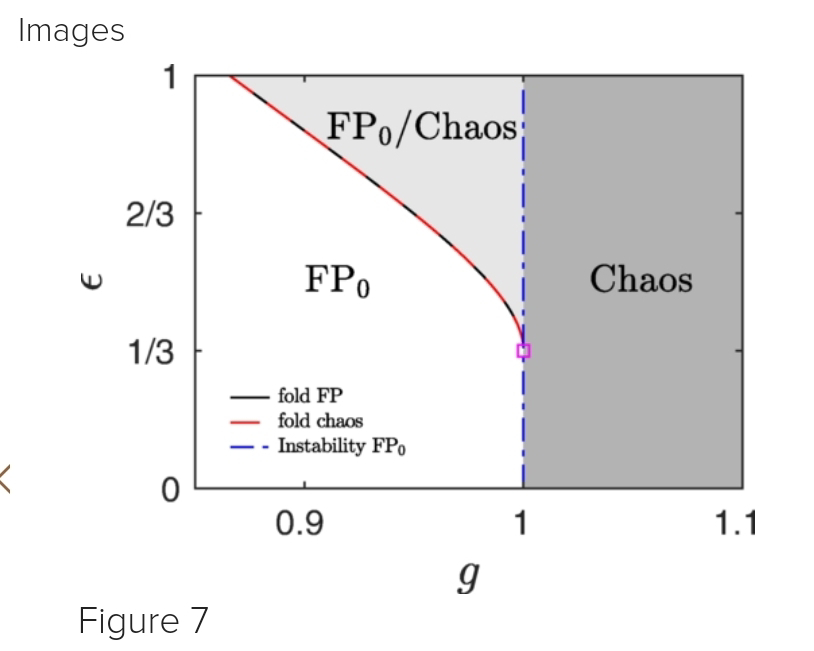Translate
mercoledì 13 marzo 2024
# brain: apropos of mandering minds, the 'default mode' network.
mercoledì 19 marzo 2025
# behav: the benefit of ignorance for traffic through a random congestible network.
sabato 5 ottobre 2024
# brain: time delay in 'reservoir brain' as a reservoir network, a hypothesis
venerdì 21 febbraio 2025
# gst: apropos of nuanced dependencies in intricately coupled network, attractive-repulsive challenge in swarmalators with time-dependent speed.
lunedì 21 agosto 2023
# gst: neural networks know their knots.
mercoledì 24 febbraio 2021
# gst: apropos of 'transitions', slow dynamics of complex connected networks can control the rate of demixing
martedì 22 ottobre 2024
# game: apropos of Parrondo's paradox, winning with losses driven by reputation and reciprocity
martedì 9 luglio 2024
# gst: discontinuous transition to chaos in a canonical random neural network
sabato 3 luglio 2021
# gst: emergence of the traveling chimera, imperfect-traveling, traveling multi-clusters, and alternating traveling chimera in a two-dimensional network
venerdì 20 dicembre 2024
# gst: apropos of transitions, towards a theory for the formation of chimera patterns in complex networks
mercoledì 30 giugno 2021
# gst: weird Nature; randomly arranged nanowire networks seem to behave, at the edge of chaos, like cortical neuronal cultures
sabato 2 novembre 2024
# gst: apropos of noise-assisted phenomena, self-organized transport in noisy dynamic networks.
lunedì 1 luglio 2024
# gst: the strangeness of networks, the hypothesis of a connection between the kinetics of networks and anomalous transport theory.
martedì 23 gennaio 2024
# gst: self-repelling species could self-organize.
lunedì 2 dicembre 2024
# gst: apropos of diffusive anomalies, anomalous diffusion of active Brownian particles in responsive elastic gels.
venerdì 5 marzo 2021
# behav: a viral marketing generated by low levels of advertising
domenica 21 luglio 2019
# brain: to trace transitions from consciousness to unconscious subliminal perception
AA << study the transition in the functional networks that characterize the human brains’ conscious-state to an unconscious subliminal state of perception >>
<< the most inner core (i.e., the most connected kernel) of the conscious-state functional network corresponds to areas which remain functionally active when the brain transitions from the conscious-state to the subliminal-state. That is, the inner core of the conscious network coincides with the subliminal-state. >>
<< This finding imposes constraints to theoretical models of consciousness, in that the location of the core of the functional brain network is in the unconscious part of the brain rather than in the conscious state as previously thought. >>
Francesca Arese Lucini, Gino Del Ferraro, et al. How the Brain Transitions from Conscious to Subliminal Perception. Neuroscience. Volume 411, Jul 15, 2019, Pages 280-290.
https://www.sciencedirect.com/science/article/abs/pii/S0306452219302052
<< The k-core of the conscious state is reduced to three active regions of the brain, the fusiform gyrus (left and right) and the precentral gyrus. These regions are the only active in the subliminal state. >>
Physicists use mathematics to trace neuro transitions. City College of New York. Jul 18, 2019.
https://m.medicalxpress.com/news/2019-07-physicists-mathematics-neuro-transitions.html
venerdì 23 febbraio 2024
# gst: soft and stiff modes in colloidal particle networks
giovedì 11 marzo 2021
# life: even a slime mold takes smart decisions about the future (Physarum polycephalum)
martedì 2 ottobre 2018
# brain: networks that may underlie our perception of free will
<< Our perception of free will is composed of a desire to act (volition) and a sense of responsibility for our actions (agency). >>
AA << study focal brain lesions that disrupt volition, causing akinetic mutism (..), or disrupt agency, causing alien limb syndrome (..), to better localize these processes in the human brain. >>
<< Lesion locations causing akinetic mutism all fell within one network, defined by connectivity to the anterior cingulate cortex. Lesion locations causing alien limb fell within a separate network, defined by connectivity to the precuneus. >>
AA << results demonstrate that lesions in different locations causing disordered volition and agency localize to unique brain networks, lending insight into the neuroanatomical substrate of free will perception. >>
R. Ryan Darby, Juho Joutsa, et al. Lesion network localization of free will. PNAS Oct 1, 2018. doi: 10.1073/pnas.1814117115
http://www.pnas.org/content/early/2018/09/25/1814117115
Study looks at brain networks involved with free will. Vanderbilt University Medical Center. Oct 1, 2018
https://m.medicalxpress.com/news/2018-10-brain-networks-involved-free.html






